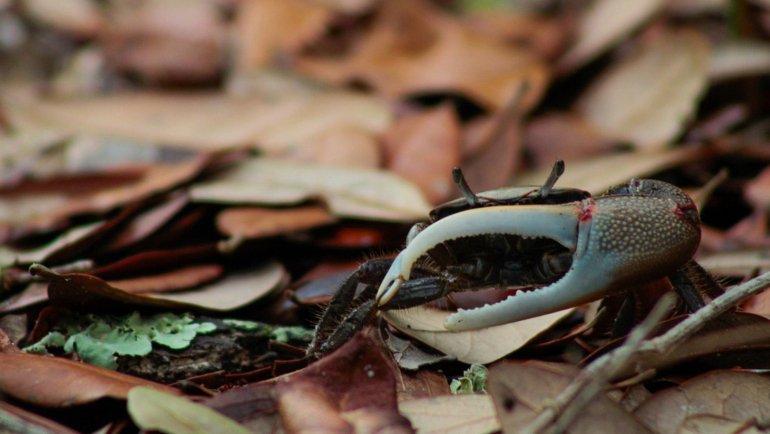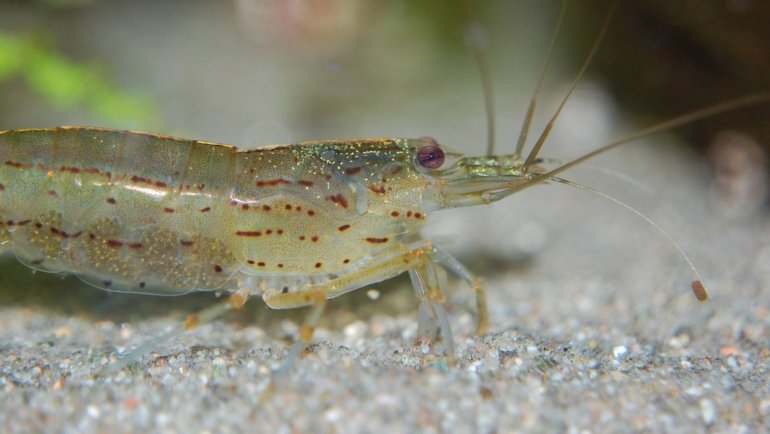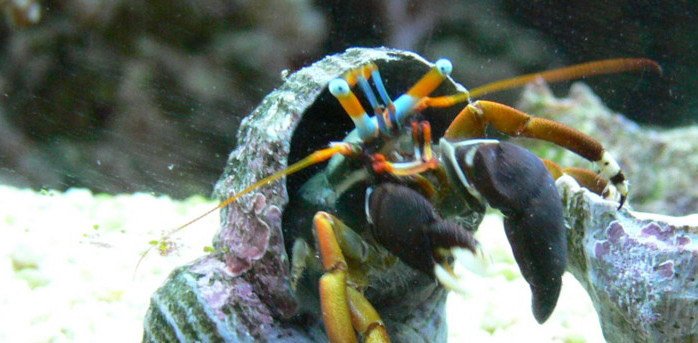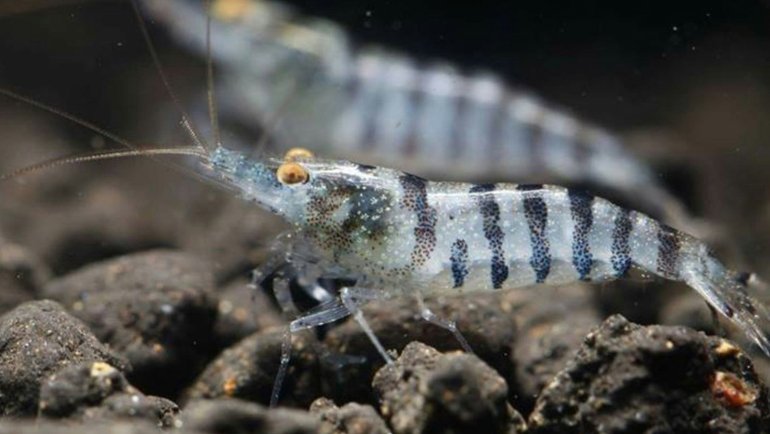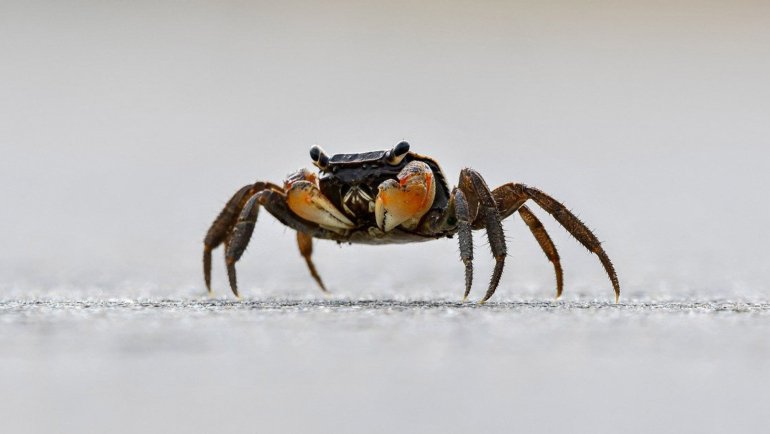Often mistaken for mollusks due to their hard outer shell, barnacles are actually crustaceans related to crabs and lobsters. These fascinating marine creatures are masters of adaptation, thriving in both shallow tidal areas and the deep sea.
Despite their seemingly immobile and simplistic appearance, barnacles possess intricate structures and play a significant role in marine ecosystems. This article dives deep into the world of barnacles, offering a comprehensive view of their biology, behavior, and importance.
Barnacles at a Glance
Classification
| Kingdom: | Animalia |
| Phylum: | Arthropoda |
| Class: | Maxillopoda |
| Order: | Sessilia (or Cirripedia) |
| Family: | Varies (e.g., Balanidae, Lepadidae) |
| Genus: | Varies (e.g., Balanus, Lepas) |
| Species: | Numerous species across genera |
Essential Information
| Average Size: | 0.2 – 3 inches (0.5 – 7.6 cm) |
| Average Weight: | 0.01 – 0.5 ounces (0.3 – 14 grams) |
| Average Lifespan: | Up to 10 years (species-dependent) |
| Geographical Range: | Global (from polar to tropical waters) |
| Conservation Status: | Mostly of Least Concern, though some may be data deficient or vulnerable due to specific habitats |
Species and Subspecies
Barnacles are a diverse group with over 1,000 recognized species. While they all share a common way of life as sessile filter-feeders, there are notable differences among them:
- Acorn Barnacles (Balanus spp.): These are the most familiar barnacles, possessing a volcano-like shape. They are often found in intertidal zones and attach directly to hard surfaces.
- Goose Barnacles (Lepas spp.): Unlike acorn barnacles, these have a flexible stalk (peduncle) that attaches to floating debris, ship bottoms, or even marine animals like whales. Their appearance is somewhat reminiscent of a goose’s neck, hence the name.
- Giant Barnacles (Austromegabalanus psittacus): Native to the coasts of Chile and Peru, this species is the largest of all barnacles. They are a culinary delicacy in some regions.
- Rhizocephalan Barnacles: These parasitic barnacles infect other crustaceans. Instead of a shell, they grow root-like tendrils into the host’s body, drawing nutrients from it.
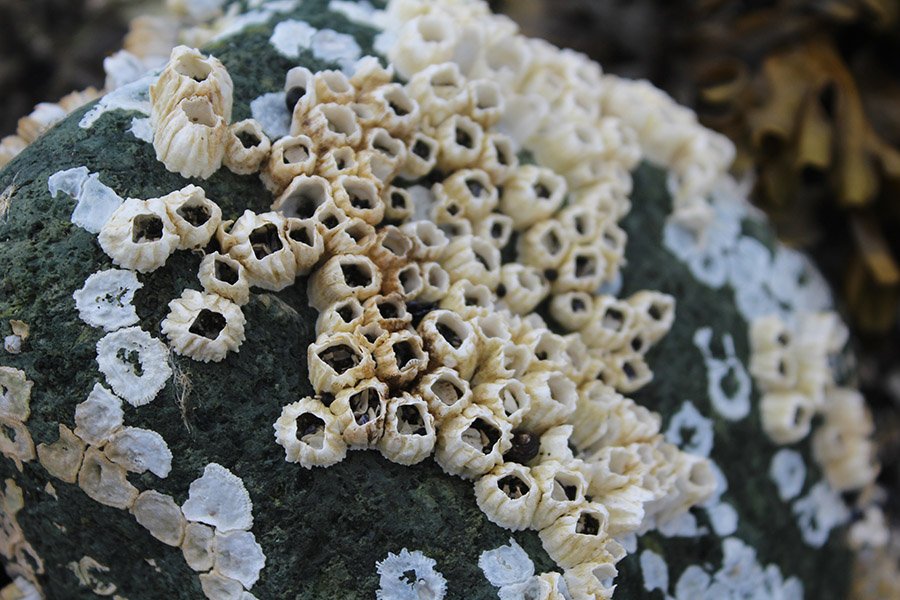
Description
Barnacles are crustaceans that have adapted to a sedentary life. They have a hard calcareous shell composed of multiple plates, which can open and close to allow the feathery leg-like appendages (cirri) to filter-feed from the water.
Depending on the species, barnacles can range in size from tiny specimens less than 0.2 inches (0.5 cm) across to giant barnacles which can reach sizes up to 3 inches (7.6 cm). Most barnacles are white or gray, though some can be pink or purple due to the presence of certain algae or their diet.
Their outer shell is often ridged or patterned. The opening at the top, from where the cirri emerge, is surrounded by movable plates that protect the barnacle during low tide or when threatened.
Barnacles are hermaphroditic, meaning each individual has both male and female reproductive organs. However, they cannot self-fertilize. They rely on a long, extendable reproductive organ to transfer sperm to neighboring barnacles. Since they are sessile, there isn’t any significant difference in appearance between the ‘male’ and ‘female’ parts of the individual.
Habitat and Distribution
Barnacles are predominantly marine animals, although some species can be found in brackish waters. Their distribution is global, spanning from the icy waters of the Arctic and Antarctic to the warm tropical seas.
They thrive particularly well in intertidal zones, where they attach themselves to various hard substrates like rocks, pilings, boat hulls, and even other marine animals like whales and turtles.
However, some, especially the goose barnacles, prefer to attach to floating debris, allowing them to colonize deeper water regions.
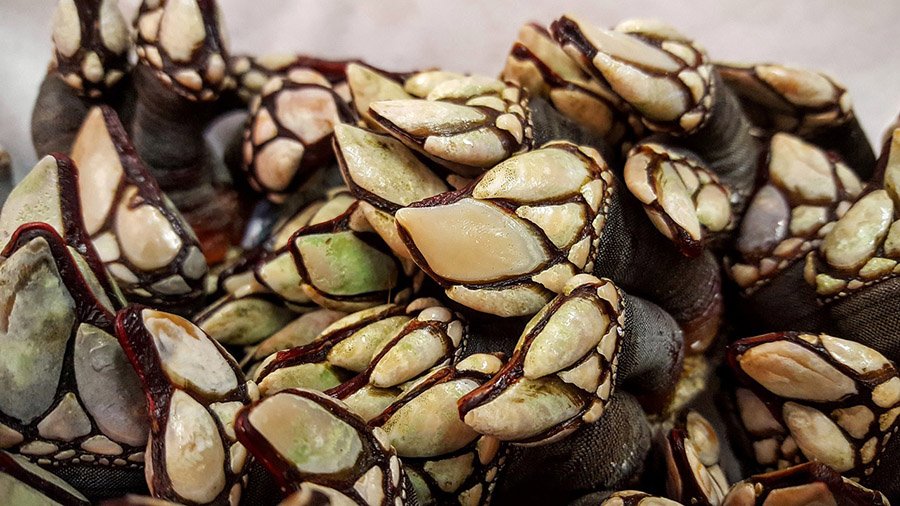
Behavior
- General Behavior: Barnacles are sessile for most of their adult lives, meaning they are permanently affixed to a substrate and do not move. They filter-feed, extending their feathery cirri out of their protective shell to capture plankton from the surrounding water.
- Social Structure: While barnacles are solitary animals in the sense that they don’t interact or cooperate with each other, they often live in dense colonies. These groupings can provide some level of protection against predators, as well as ensure successful reproduction since proximity to other barnacles is crucial for mating.
- Communication: Barnacles do not have complex methods of communication like many mobile animals. They are sensitive to changes in their environment, such as the rise and fall of tides, and will close their protective plates during low tide or when sensing potential threats.
- Molting: Like other crustaceans, barnacles undergo molting, shedding their old exoskeleton to grow. This process can be fascinating to observe, as the barnacle will often consume the old exoskeleton to reclaim vital minerals.
- Adaptation to Rough Waters: Some barnacle species have specialized adaptations allowing them to thrive in turbulent waters, such as cone-shaped shells that deflect wave energy, ensuring they aren’t easily dislodged by crashing waves.
Diet and Feeding Behavior
Barnacles are omnivorous, they primarily feed on microscopic plankton, including tiny algae (phytoplankton) and small organisms (zooplankton). They also ingest detritus (organic matter) from the water.
Barnacles are filter feeders. They possess specialized, feathery appendages called cirri, which they extend out of their shells to sweep the water and capture food particles. When they retract the cirri, any captured food gets moved toward the mouth.
They feed most actively when submerged during high tides, but in splash zones, they can also capture food from the spray. Their feeding rates can vary depending on water conditions, such as turbulence, which can increase the amount of available plankton.
Predators
Barnacles face a range of predators throughout their lifespans. As larvae, they can be consumed by various filter-feeding organisms due to their tiny size. Adult barnacles have hard calcareous plates that offer some protection, but they still fall prey to several marine species. Common predators include:
- Whelks: These predatory snails use their radula (a rasping tongue-like organ) to grind through the barnacle’s shell.
- Sea Stars: Some species, like the purple sea star, can pry the barnacle’s plates apart and insert their stomachs to digest the soft insides.
- Shore Crabs: They use their strong claws to pick apart the barnacle’s shell and consume the soft tissue inside.
- Birds: Shorebirds, particularly oystercatchers, use their pointed beaks to pick out and eat the barnacle’s flesh.
Various stages of a barnacle’s life make them more vulnerable to different predators, with the free-swimming larvae being the most susceptible. The hardy adult form, while protected by calcareous plates, isn’t immune to the determined efforts of specialized predators.
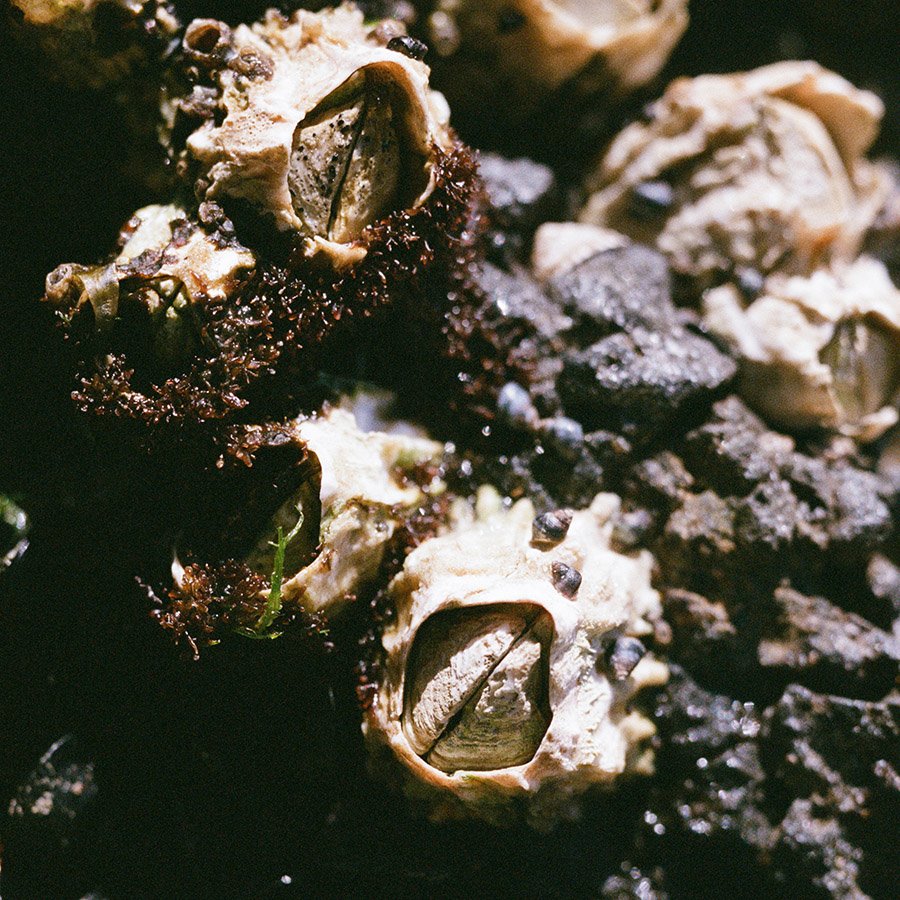
Reproduction and Life Cycle
Barnacles have a unique reproductive system. They are hermaphroditic, meaning each individual possesses both male and female reproductive organs. However, self-fertilization is rare.
Instead, barnacles mate with neighbors using an exceptionally long reproductive organ, often considered the longest, relative to body size, in the animal kingdom. This is due to the sedentary nature of barnacles; since they cannot move to find a mate, they need to reach out to nearby individuals.
Once fertilized, barnacle eggs are kept inside the shell where they undergo development. The gestation period varies among species but usually lasts a few weeks.
A single barnacle can produce thousands of eggs in one reproductive cycle. However, the survival rate of these larvae is low due to predation and environmental factors. Once hatched, the larvae undergo several planktonic (free-swimming) stages before settling down to become a sessile (immobile) adult.
The larvae, during these planktonic stages, drift in the water column and undergo metamorphosis. They then use antennae to attach to a hard substrate and develop into the familiar adult form. There’s no direct care of the young as seen in many other animals; once the larvae are released, they’re on their own.
Conservation and Threats
Most barnacle species are not currently considered endangered or threatened. Their population status is often stable due to their wide distribution and high reproductive rates.
While barnacles themselves aren’t often the target of conservation concerns, changes in marine environments can impact them. Pollution, habitat destruction, and climate change-induced alterations in ocean temperatures and acidification can affect barnacle populations and distribution.
Oil spills, in particular, can be detrimental, coating hard surfaces and preventing larvae from settling and attaching. Furthermore, invasive species can outcompete native barnacle species for space.
There aren’t specific global conservation efforts targeting barnacles. However, broader marine conservation initiatives that aim to protect habitats, reduce pollution, and combat climate change indirectly benefit barnacles by preserving the environments they thrive in. Local efforts might involve monitoring and managing invasive species that threaten native barnacle populations.
Fun Facts
- Home Sweet Home: Many marine animals, including crabs and mollusks, use barnacles as living habitats. These hosts offer barnacles a mobile home, exposing them to more water (and food) than they’d experience if stationary.
- Hitching a Ride: Some barnacle species are known to attach themselves to whales, turtles, and even drifting wood. The ones on whales are specifically called “whale barnacles” and have co-evolved with their mammalian hosts.
- Living Fossil: Fossilized barnacles date back to the Late Paleozoic, roughly 360 million years ago, proving they’ve been a longstanding feature in our oceans.
- Feeding Mechanism: Barnacles feed using their feathery legs (cirri) which they extend out of their shell to catch tiny particles of food from the water.
- Symbol of Permanence: Due to their strong adhesive properties and persistence, barnacles have been used metaphorically in literature to represent something that is difficult to remove or discard.
Frequently Asked Questions
How do barnacles attach to surfaces?
Barnacles secrete a super-strong adhesive that helps them firmly bind to various surfaces. This adhesive works underwater and is so effective that researchers are studying it for potential use in surgery and dentistry.
Do barnacles harm the animals they attach to, like whales?
Generally, barnacles don’t harm their hosts. For large animals like whales, the presence of barnacles might even be beneficial, potentially offering some protection against predators. However, a heavy infestation can be detrimental to smaller marine creatures due to added weight.
What eats barnacles?
Several marine creatures have barnacles on their menu. Common predators include sea stars, snails, and some types of birds, like the oystercatcher.
Can you eat barnacles?
Yes, certain species of barnacles, especially those in the family Pollicipedidae, are consumed in various parts of the world, particularly in Spain and Portugal. They are known as “percebes” and are considered a delicacy.
How do barnacles reproduce if they’re stuck in one place?
Barnacles have a unique solution to this problem. They have an exceptionally long reproductive organ, allowing them to mate with neighboring barnacles without needing to move. They are also hermaphroditic, possessing both male and female reproductive organs, though self-fertilization is rare.
